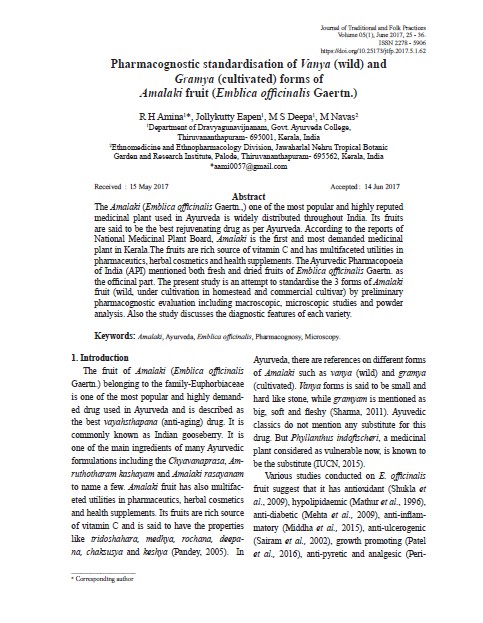Pharmacognostic standardisation of Vanya (wild) and Gramya (cultivated) forms of Amalaki fruit (Emblica officinalis Gaertn.)
Keywords:
Amalaki, Ayurveda, Emblica officinalis, Pharmacognosy, MicroscopyAbstract
The Amalaki (Emblica officinalis Gaertn.,) one of the most popular and highly reputed medicinal plant used in Ayurveda is widely distributed throughout India. Its fruits are said to be the best rejuvenating drug as per Ayurveda. According to the reports of National Medicinal Plant Board, Amalaki is the first and most demanded medicinal plant in Kerala.The fruits are rich source of vitamin C and has multifaceted utilities in pharmaceutics, herbal cosmetics and health supplements. The Ayurvedic Pharmacopoeia of India (API) mentioned both fresh and dried fruits of Emblica officinalis Gaertn. as the officinal part. The present study is an attempt to standardise the 3 forms of Amalaki fruit (wild, under cultivation in homestead and commercial cultivar) by preliminary pharmacognostic evaluation including macroscopic, microscopic studies and powder analysis. Also the study discusses the diagnostic features of each variety.


